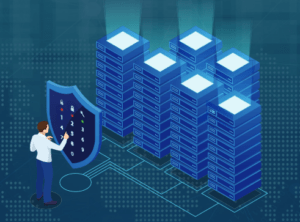Advancing technologies have been a great asset for business productivity and growth. However, they have also exposed a new set of security-related challenges. As cyber threats continue to evolve rapidly, your business security programs and procedures must constantly improve if you want to stand a chance of protecting your critical systems and data. One of these vital security components is moving beyond single-layer security systems.

The “password” has been the status quo for user authentication for years. However, as our technology and communications capabilities have advanced over the years, the password on its own has failed to keep up as an adequate security measure.
Unfortunately, even with strict company policies requiring unique or complex passwords, relying on passwords alone for identity and access authentication can spell trouble. Password stuffing and phishing schemes easily trick users into unintentionally sharing their privileged credentials. Third-party application breaches can result in password exposure while additional cyber threats, such as keystroke logging or brute force attacks, can be used to systematically identify or capture even the most complex passwords.
Implement layered security strategies like multi factor authentication. Requiring users to validate their identity with more than one single-security factor, such as a username and password, allows you to maintain control over who is accessing your network and data. The use of multiple unique verification factors will exponentially reduce risks and vulnerabilities from exposed or stolen credentials.
A password server stores passwords in a centralized, secure and encrypted repository or vault, and auto-fills the password with a cached credential any time a user is challenged to authenticate it. This system allows you to enforce strong password policies and access permissions without inconveniencing your users, and boosts productivity by virtually eliminating time wasted in resetting lost or forgotten passwords.

Conducting security awareness training for ALL users will help improve employee alertness and recognition of common cyber threats such as phishing attempts, virulent webpages, malicious advertisements and more. After all, knowledge is power. Users that are well-trained gain a deeper appreciation of the value of security systems and will be more skeptical and cautious in their daily activities.
An SSO system enables your users to access multiple accounts and applications via a single secure login and authentication process. Once identity and access permissions are validated, the user can securely access any account managed by the SSO program from any device, at any location.